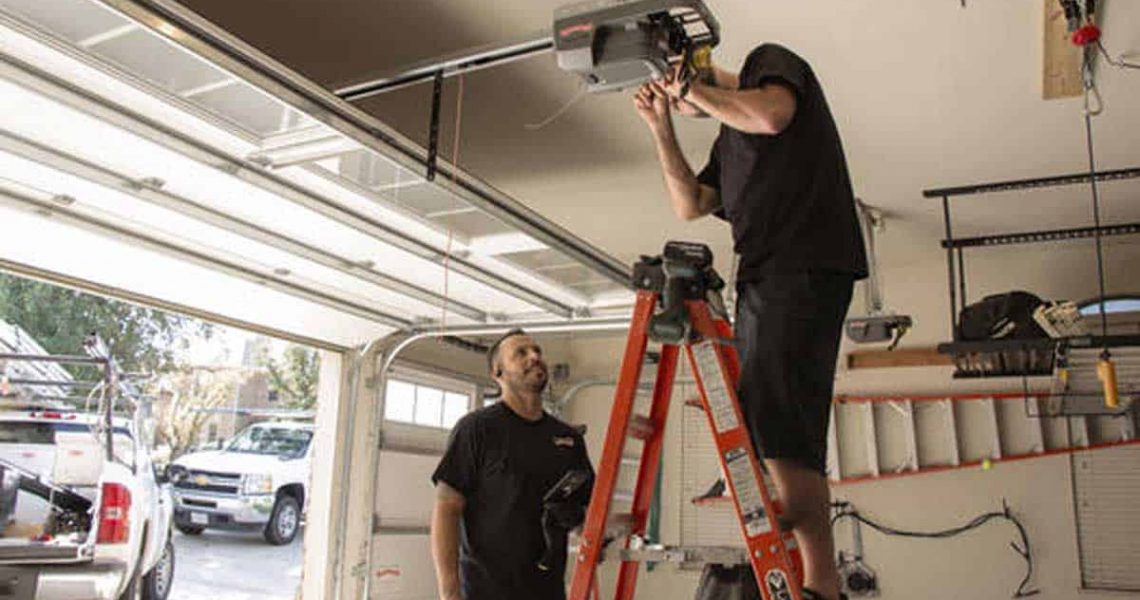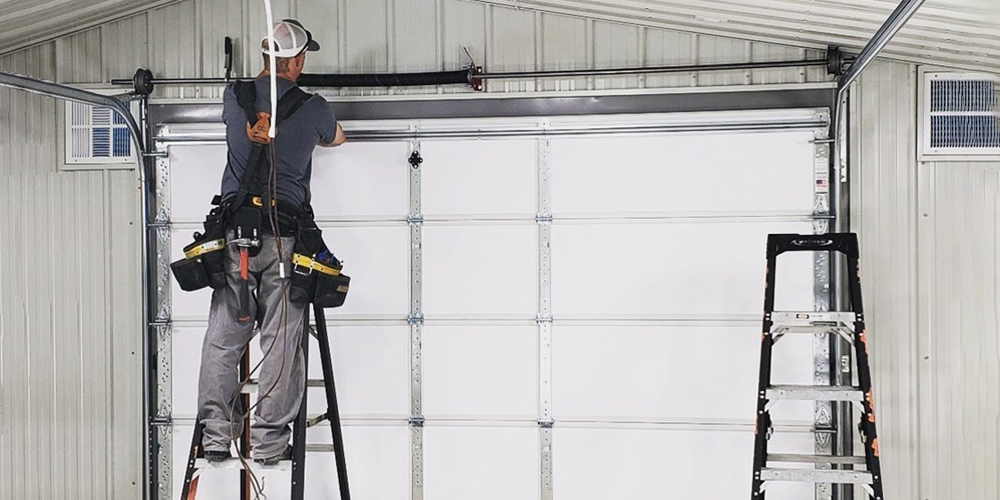Garage doors nanaimo: Which material lasts the longest?
Garage doors nanaimo: Which material lasts the longest?
Blog Article
Common Issues and Solutions for Homeowners With Garage Doors
As a homeowner, you may encounter several typical garage door concerns that can interrupt your daily routine. From malfunctioning openers to loud procedure, these troubles can be frustrating. Fortunately, numerous remedies are straightforward and can save you time and money. Some concerns may need specialist aid. Allow's explore the most frequent garage door problems and exactly how you can tackle them properly.
Malfunctioning Garage Door Openers
When your garage door opener starts acting up, it can be aggravating, especially if you count on it daily. You might find that it doesn't react to your remote or the door opens up and shuts unpredictably. If that's not the problem, examine the opener's power source.
Don't be reluctant to consult your individual handbook for troubleshooting pointers specific to your version, or think about calling an expert if the problem continues. Taking these steps can help restore your garage door's functionality in no time.
Misaligned Garage Door Tracks
If your garage door isn't opening or closing smoothly, misaligned tracks could be the offender. Common reasons include damage or unexpected bumps that disrupt the positioning. Fixing these track problems can recover your door's feature and keep it running safely.
Sources Of Misalignment
Misalignment of garage door tracks can happen for a number of factors, typically resulting in aggravating operational concerns. One common reason is routine damage; with time, screws and bolts can loosen up, causing the tracks to shift. If your garage door gets bumped or hit, that impact can misalign the tracks. Furthermore, changes in temperature level and moisture can cause the steel tracks to increase or contract, resulting in misalignment. Dust and debris buildup can also obstruct the tracks, pushing them misplaced. Lastly, incorrect setup can bring about consistent positioning problems. Identifying these reasons can help you understand why your garage door isn't functioning smoothly.
Repairing Track Issues
Taking care of track concerns with misaligned garage doors requires a careful strategy to ensure smooth procedure. First, inspect the tracks for bends or debris that might obstruct movement. Make use of a degree to check if the tracks are right; if not, carefully tap them back into positioning with a rubber mallet. Next off, verify the braces holding the tracks are limited; loose screws can cause misalignment. If the tracks are significantly harmed, consider changing them. As soon as lined up, oil the tracks with a silicone-based spray to reduce rubbing. Examination the garage door's procedure to verify it opens and shuts smoothly. Routine maintenance will help stop future track problems and maintain your garage door operating properly.
Broken Springs
When your garage door unexpectedly refuses to open up or close, it's often as a result of broken springtimes. These springs bear the weight of the door, making it easy for you to lift or reduce it. If they snap, you'll notice that your door really feels hefty or will not budge in all.
To validate the problem, aesthetically evaluate the springs for spaces or breaks. If you suspect they're broken, don't attempt to fix them yourself, as they're under high stress and can cause injury. Instead, call a specialist who can securely change the springtimes.
Normal upkeep can aid avoid springtime failing, so watch on their problem and lube them occasionally. If you're experiencing frequent spring issues, think about upgrading to higher-quality springs that can hold up against even more wear and tear. This proactive strategy can save you money and time over time, guaranteeing your garage door operates efficiently.
Noisy Garage Doors
After addressing problems like busted springs, you might notice an additional typical problem: noisy garage doors. If your garage door squeals, rattles, or groans, it can be rather frustrating, particularly if it's disrupting your peace. The noise often comes from damaged rollers, loose equipment, or absence of lubrication.
Beginning by inspecting the rollers and joints. If they're filthy or damaged, cleansing or changing them can greatly reduce sound. Next off, check for loosened screws or screws; tightening them can get rid of rattling audios. Do not fail to remember to lubricate the relocating get rid of a silicone-based spray or garage door lubricant. This will certainly aid lessen friction and sound.
If your door still seems like a dinosaur, consider speaking with a professional. Routine maintenance can protect against loud garage doors and lengthen their lifespan, ensuring you delight in a quieter, smoother procedure.
Garage Door Remote Issues
Numerous house owners experience irritation with garage door remote issues at some time. If your remote isn't functioning, the initial step is to check the batteries. Weak or dead batteries are typically the wrongdoers. Change them and see if that addresses the problem. If the remote still will not work, attempt reprogramming it. Consult your garage door opener handbook for details directions.
Often, interference from other electronic devices can influence your remote. Check for any type of neighboring devices that may be creating a signal disruption. If that doesn't assist, evaluate the remote for physical damages, like cracks or broken switches.
An additional common issue is distance; you may just be also much from the garage door. Make certain you're within range when trying to run it. see this site If all else falls short, consider getting in touch with an expert for help. They can detect and deal with any underlying issues with your garage door system.
Weather Condition Stripping Problems
If you see drafts, water leakages, or enhanced energy costs, your garage door's climate removing may be used out. Understanding how to detect indications of wear and knowing installment ideas can help you keep an appropriate seal - garage doors nanaimo. When it's time for a substitute, you'll have plenty of options to pick from
Indications of Use
As you utilize your garage door in time, the weather stripping can start to show indicators of wear, which is crucial to attend to. Try to find voids or splits in the rubber or plastic product; these can allow drafts, dust, and wetness. If you observe the removing is brittle or tearing far from the door, it's time to act. You may also discover that your garage door doesn't seal effectively, bring about enhanced power prices or bug issues. Frequently inspect the climate stripping to catch these concerns early. If you see significant damage, changing the climate stripping can assist maintain your garage's effectiveness and protect your belongings from the aspects. Do not overlook these signs-- act immediately!
Setup Tips
When you observe use on your garage door's climate stripping, dealing with the installation can make a substantial distinction. Verify you have the right kind of weather condition stripping for your garage door. By paying focus to these information, you'll boost your garage door's insulation and secure your home from the elements.
Substitute Options
While you might have mounted your garage door's weather stripping appropriately, wear and tear can still lead to problems that require substitute. Action your door's dimensions properly to assure a proper fit, and pick self-adhesive strips for easy setup. Routinely inspecting and changing weather condition stripping not only enhances your garage's power performance yet also safeguards it from damage.
Sensor Malfunctions

Start by examining the sensor alignment. Make certain both sensors face each various other and are degree. If they're not, change them till they are. Next, tidy the sensor lenses with a soft towel to eliminate any type of dust or particles that can obstruct their sight.
If the sensing units appear undamaged yet the door still will not close, it might be time to change them. With a little troubleshooting, you can normally fix sensing unit issues and get your garage door functioning efficiently once more.
Regularly Asked Concerns
How Frequently Should I Maintain My Garage Door System?
You should preserve your garage door system at the very least twice a year. Regular look for wear, lubrication of moving parts, and changing the tracks can maintain it operating smoothly and prolong its lifespan substantially.
Can I Set Up a Garage Door Myself?
Yes, you can mount a garage door on your own, but it needs cautious preparation and the right devices. Make certain you follow the supplier's instructions carefully and take into consideration safety and security precautions to avoid link accidents during setup.
What Is the Typical Life Expectancy of a Garage Door?
The standard life-span of a garage door is generally 15 to thirty years, depending upon products and upkeep. If you take care of it well, you can optimize its durability and take pleasure in trusted efficiency.

How Do I Select the Right Garage Door?
When you choose the ideal garage door, think about products, style, and insulation. Think regarding your home's architecture, spending plan, and maintenance needs. Do not neglect to check local regulations and energy efficiency scores for optimal performance.
Are There Energy-Efficient Garage Door Options Available?
Yes, there are energy-efficient garage door options offered. You can choose protected doors, which assist keep your garage's temperature level, or search for versions with a high R-value to enhance power performance and reduce energy prices.
Report this page